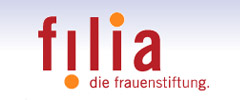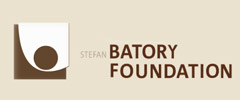A new directive to improve the safety of toys
21.11.2008 |European Parliament Press Release
The report on the safety of toys, drafted by Marianne Thyssen (EPP-ED, BE), was adopted on Thursday 6 November by the Committee on the Internal Market and Consumer Protection. The aim of the new draft directive is to strengthen and update the rules on toy safety. The existing directive has given good service but needs replacing.
New types of toy have appeared on the market, with new materials and technologies being used for their manufacture. In addition, cases of toxic or dangerous toys being placed on the market, such as Mattel in 2007, have shown the need for tighter safety rules. Lastly, new horizontal rules, such as those on the "goods package", are about to enter into force and the toys directive needed to be brought into line with these.
MEPs gave their backing to the Commission's draft legislation but adopted amendments tightening restrictions on the use of chemicals and perfumes, clarifying the rules on warnings and totally banning the use of heavy metals in toy manufacture.
Is this a toy which I see before me?
A toy is defined under the directive as a product intended to be used for playing by children under 14 years of age. A list of products not regarded as toys is annexed to the text. It includes party decorations, collectors' items clearly intended for people aged fourteen or over (including reproductions of real firearms or faithful scale models), puzzles with more than 500 pieces, fireworks and new products such as video games and game consoles.
MEPs expanded this list to include children's books made only of cardboard and/or paper which do not contain any added elements such as plastic toys or sound features.
Safety first
Manufacturers will have to ensure that toys are not harmful or toxic to children's health. MEPs want Member States to apply the precautionary principle when enacting the legislation, especially if scientific evidence cannot determine whether a toy poses a risk.
Any toy placed on the EU market must meet general safety standards. An EP amendment adds that "the absence of an accident history may not automatically be taken as indicating a low presumption of risk". MEPs backed a clause proposed by the Commission which requires manufacturers and importers to keep the technical documentation and the EC declaration of conformity for a period of 10 years after the toy has been placed on the market.
"Not suitable for under-threes"
MEPS also clarified and strengthened the rules regarding warnings on packaging and on toys themselves: to make them more visible, they must be preceded by the word "Warning".
Toys for children under 36 months must meet higher safety standards. Some toys bearing the warning "Not suitable for children under three years" are clearly intended for such children (e.g. rattles). If a toy is obviously intended for the under-threes, it will no longer be possible to use this misleading claim.
Allergenic fragrances
The Commission proposal bans the use of some allergenic fragrances. MEPs did not back a total ban but reached a compromise expanding considerably the list of banned substances, traces of which must not exceed a certain limit. This will affect toys such as play dough and dolls. A limited number of substances listed will be allowed in educational toys designed to develop the senses, such as "olfactory, gustative and cosmetic games".
The Internal Market Committee also tightened up the restrictions on substances that are carcinogenic, mutagenic or toxic for reproduction (CMR), saying these should be almost completely banned. The conditions for exemption were clarified and made stricter. The committee also banned the use of heavy metals such as arsenic, cadmium, chromium (VI), lead, mercury and organic tin in the manufacture of toys.
Do not swallow
Other amendments toughened up the clauses seeking to reduce the risk of suffocation or strangling by small detachable parts or toys contained in food such as chocolate eggs.
Legal update
The broad legal framework governing the sale of goods in the EU has recently been updated. The toy safety directive is the first to reflect the requirements of the new framework.
The old directive "is not sufficient to deal with the risks from imported toys, since 95% of toys in Britain and 80% in the EU as whole are imported from China", said Arlene McCarthy (PES, UK), chair of the Internal Market Committee. The new legislation will require Member States to carry out stricter checks under Directive 2001/95/EC on general product safety.
Next steps
The committee's draft report will be put to the vote at Parliament's plenary in Strasbourg in December. According to the rapporteur, negotiations with the Council and Commission will start soon with the aim of reaching a first-reading agreement, so that "toys can be made safe as quickly as possible".
Procedure: Co-decision, first reading -- Plenary vote: December II (Strasbourg) -- Adopted unanimously (40 votes in favour)
03/11/2008
Chair : Arlene McCarthy (PES, UK)
































